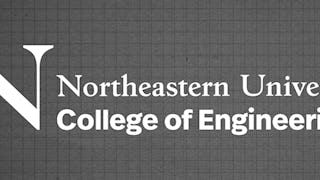This course delves into both the theoretical aspects and practical applications of data mining within the field of engineering. It provides a comprehensive review of the essential fundamentals and central concepts underpinning data mining. Additionally, it introduces pivotal data mining methodologies and offers a guide to executing these techniques through various algorithms. Students will be introduced to a range of data mining techniques, such as clustering, the extraction of association rules, support vector machines, neural networks, and the exploration of other complex techniques. Additionally, we will use case studies to explore the application of data mining across diverse sectors, including but not limited to manufacturing, healthcare, medicine, business, and various service industries.

Enjoy unlimited growth with a year of Coursera Plus for $199 (regularly $399). Save now.

Machine Learning and Data Analytics Part 2

Instructor: Chinthaka Pathum Dinesh Herath Gedara
Included with
Skills you'll gain
- Deep Learning
- Big Data
- Data Preprocessing
- Forecasting
- Artificial Neural Networks
- Analytics
- Unsupervised Learning
- Classification Algorithms
- Regression Analysis
- Predictive Modeling
- Time Series Analysis and Forecasting
- Data Mining
- Advanced Analytics
- Machine Learning Algorithms
- Feature Engineering
- Text Mining
- Data Science
- Supervised Learning
Details to know

Add to your LinkedIn profile
July 2025
7 assignments
See how employees at top companies are mastering in-demand skills

There are 7 modules in this course
In this module, we'll learn two powerful techniques for refining predictive models: Ridge regression and Lasso regression. These methods address the challenge of overfitting in linear regression by introducing regularization techniques. Ridge regression employs L2 regularization to control the magnitude of coefficients, while Lasso regression utilizes L1 regularization to perform feature selection. Throughout this module, we'll explore the principles behind Ridge and Lasso regression, examine their mathematical foundations, understand how they tackle overfitting, learn how to implement them in practical scenarios, and discuss the intricacies of these essential regression techniques.
What's included
3 videos9 readings1 assignment
In this module, we'll dive into the core principles and algorithms of clustering in data mining. You'll learn about key techniques such as K-Means, hierarchical clustering, and DBSCAN. Through hands-on activities and real-world datasets, you'll learn to identify patterns and groupings effectively. With K-Means clustering, we’ll explore how to partition data into distinct groups based on similarity. Hierarchical clustering will help us dive into creating dendrograms to visualize relationships between data points. Finally, DBSCAN will introduce you to density-based clustering, ideal for detecting outliers and noise in your data. Get ready to unlock the power of clustering algorithms!
What's included
3 videos7 readings1 assignment
In this module, we discuss the fundamental concepts and algorithms of association rule mining, including Apriori and FP-Growth. Through the Association Rule Mining lesson, you'll grasp the essence of discovering meaningful patterns and relationships in large datasets. The FP-Growth (Frequent Pattern Growth) Algorithm lesson will equip you with the skills to create and implement efficient algorithms for identifying frequent itemsets and strong association rules. Additionally, you'll learn how collaborative filtering, a technique widely used in recommendation systems, leverages association rule mining to provide personalized recommendations. By the end of the module, you'll be adept at evaluating the effectiveness of association rules using key metrics such as support, confidence, and lift.
What's included
3 videos6 readings1 assignment
In this module, you'll master the application of support vector machines (SVMs) for classification tasks, learning to leverage this powerful discriminative algorithm effectively. We'll explore the significance of support vectors in defining the margin that separates different classes, enhancing the model's generalization capabilities. You'll gain insights into the differences between a hard margin SVM and soft margin SVM, with a focus on handling real-world, noisy data. Additionally, we'll delve into the mathematical formulation of the soft margin SVM, emphasizing the objective function and its critical role in balancing margin width and classification accuracy.
What's included
3 videos5 readings1 assignment
This module is designed to provide you with a comprehensive understanding of neural network architectures and their functionality. You will explore the intricacies of feedforward networks, the mechanics of backpropagation, and foundational concepts in deep learning. Through practical examples and hands-on exercises, you'll learn how to build and train neural networks to solve complex problems. By the end of this module, you will have a solid grasp of how neural networks operate and be prepared to apply deep learning techniques in various real-world scenarios.
What's included
3 videos3 readings1 assignment
Welcome to the Text Mining Module! This module will equip you with essential skills and knowledge in text mining, covering key concepts, techniques, and the related challenges you may encounter. You will learn about text preprocessing, tokenization, and feature extraction, all crucial for transforming raw text into valuable data. We will delve into applying various text mining algorithms for practical applications, such as information retrieval, sentiment analysis, and topic modeling. By the end of this module, you will be adept at leveraging text mining tools to uncover insights and patterns from textual data, enhancing your data analysis capabilities.
What's included
2 videos3 readings1 assignment
In this module, you will explore the realm of time series analysis, mastering fundamental concepts and techniques essential for understanding and analyzing temporal data patterns. You will gain an understanding of the triad of trend, seasonality, and noise, deciphering their influence on time series behavior. Through hands-on exercises, you will learn to discern patterns, identify trends, and isolate seasonal fluctuations within time series data. Building upon this foundation, you will then embark on a journey through advanced time series modeling techniques. You will wield powerful tools such as ARIMA, exponential smoothing, and LSTM networks to forecast future trends and detect anomalies within temporal data streams. By the module's conclusion, you will emerge equipped with the skills and knowledge necessary to harness the predictive power of time series analysis in diverse domains.
What's included
2 videos4 readings1 assignment
Instructor

Offered by
Explore more from Data Analysis
 Status: Preview
Status: PreviewNortheastern University
 Status: Preview
Status: PreviewNortheastern University
 Status: Free Trial
Status: Free Trial Status: Preview
Status: PreviewNortheastern University
Why people choose Coursera for their career





Open new doors with Coursera Plus
Unlimited access to 10,000+ world-class courses, hands-on projects, and job-ready certificate programs - all included in your subscription
Advance your career with an online degree
Earn a degree from world-class universities - 100% online
Join over 3,400 global companies that choose Coursera for Business
Upskill your employees to excel in the digital economy
Frequently asked questions
To access the course materials, assignments and to earn a Certificate, you will need to purchase the Certificate experience when you enroll in a course. You can try a Free Trial instead, or apply for Financial Aid. The course may offer 'Full Course, No Certificate' instead. This option lets you see all course materials, submit required assessments, and get a final grade. This also means that you will not be able to purchase a Certificate experience.
When you purchase a Certificate you get access to all course materials, including graded assignments. Upon completing the course, your electronic Certificate will be added to your Accomplishments page - from there, you can print your Certificate or add it to your LinkedIn profile.
Yes. In select learning programs, you can apply for financial aid or a scholarship if you can’t afford the enrollment fee. If fin aid or scholarship is available for your learning program selection, you’ll find a link to apply on the description page.
More questions
Financial aid available,

